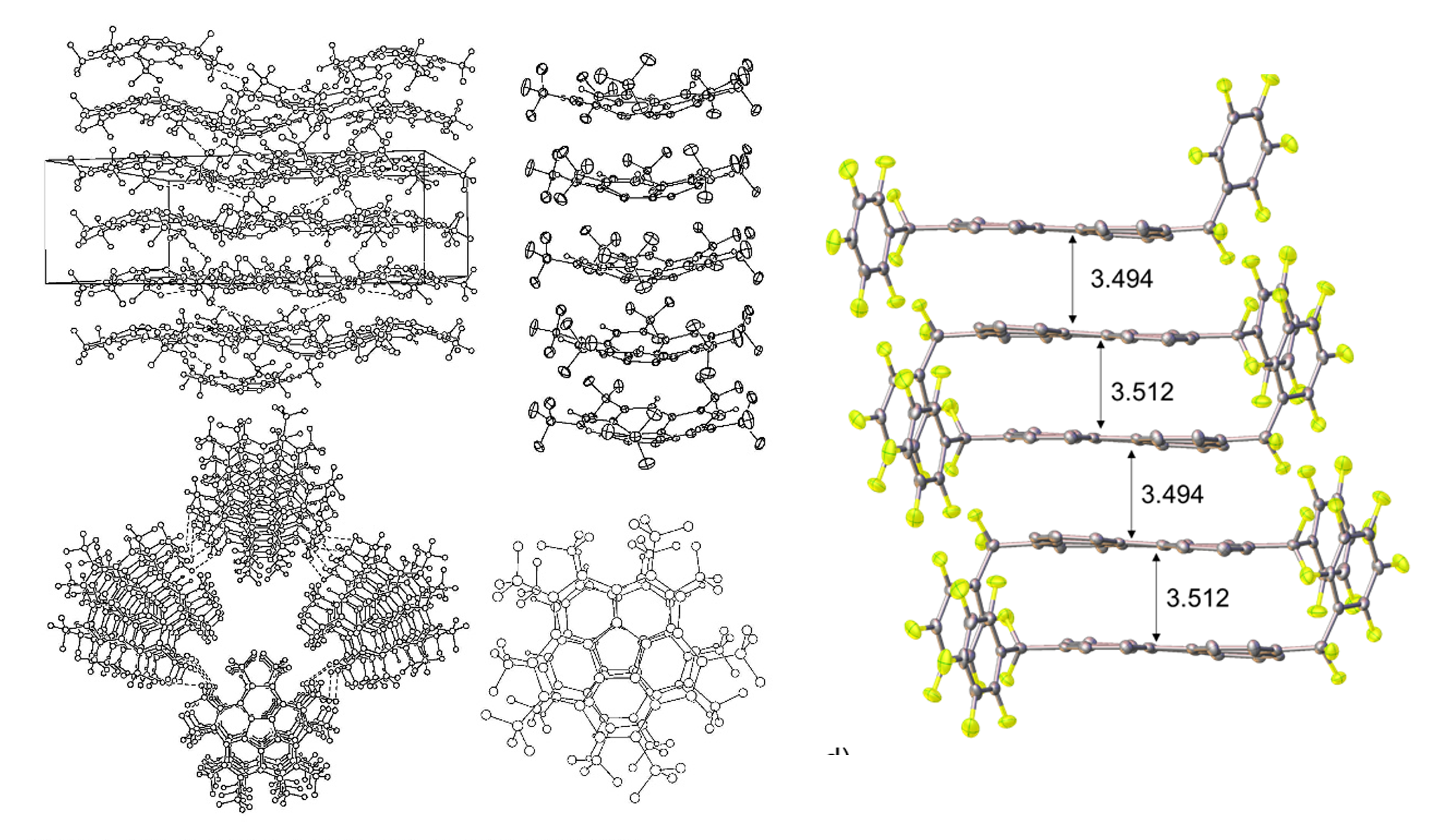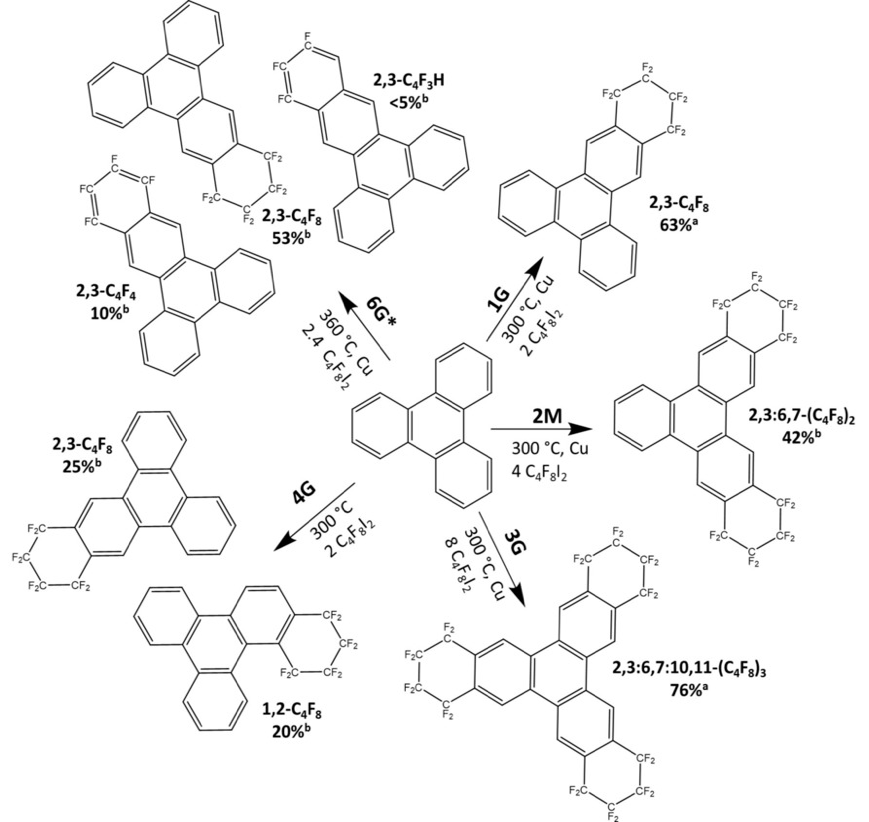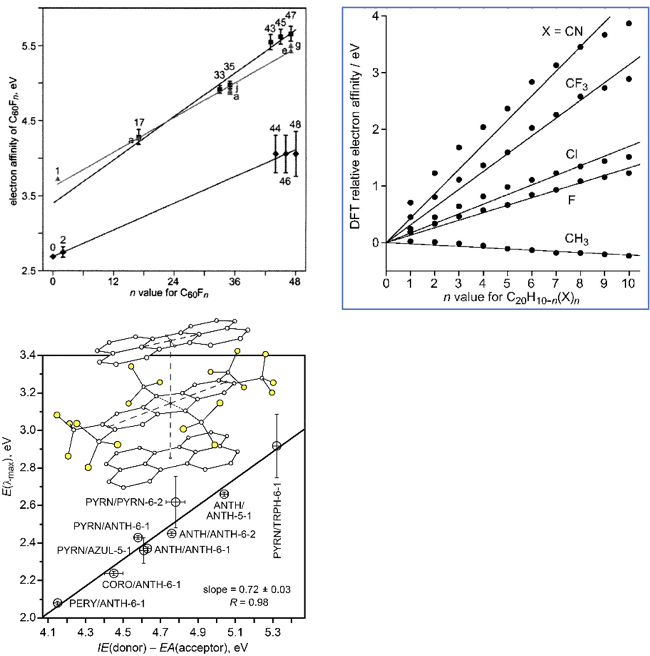Research
What is the main focus of your research?
We develop “top-down” synthetic methodologies for organic elec- tron-acceptor materials that become components in a wide variety of organic optoelectronic devices. Our syntheses are based on one-step, high-temperature, gas- or solution-phase reactions be- tween polycyclic aromatic hydrocarbons (PAHs) and perfluoroalkyl or -aryl halides. While dozens of PAH(RF)n derivatives with electron affinities that range from 1.0 to 3.3 eV have been prepared in this manner in our lab, optimizing these reactions to produce primarily a single product has remained challenging until now. This paper provides the first examples of highly selective syntheses of poly- substituted fluorous triphenylenes. Our finding that copper metal promotes specific substitution sites on triphenylene can now be applied to other PAH substrates that have triphenylene-like struc- tural elements to achieve higher selectivity in the preparation of particular PAH(RF/ArF)n targets of interest. With the myriad of fluo- rous PAHs at hand, we also study how various types and various numbers of fluorous groups affect their solid-state packing, which can greatly influence charge transport kinetics and thermodynam- ics. An unanticipated example of this is reported in this paper: re- placing one F atom with an H atom in a cyclo-C4F8 substituent re- sulted in a shift in columnar stacking of 508.


Why fluorination is a beneficial design approach for n-type organic semiconductorsh of Fluorinated Compounds
We design, synthesize and study new fluorinated molecules with superior electron acceptor properties.
Correlations between electron affinity and chemical composition and substitution/addition patterns in new molecules are probed using physicochemical methods including cyclic voltammetry, low-temperature photoelectron spectroscopy, with the support of theoretical calculations of electronic properties.
Effectiveness of new acceptor materials is probed by testing their functions in active layers of electronic devices, such as organic photovoltaics, organic field effect transistors.
Probing Electron Acceptor Strength of Fluorinated Compounds
We design, synthesize and study new fluorinated molecules with superior electron acceptor properties.
Correlations between electron affinity and chemical composition and substitution/addition patterns in new molecules are probed using physicochemical methods including cyclic voltammetry, low-temperature photoelectron spectroscopy, with the support of theoretical calculations of electronic properties.
Effectiveness of new acceptor materials is probed by testing their functions in active layers of electronic devices, such as organic photovoltaics, organic field effect transistors.
We study donor-acceptor complexes with our acceptor materials to understand solid-state ordering and interactions.
